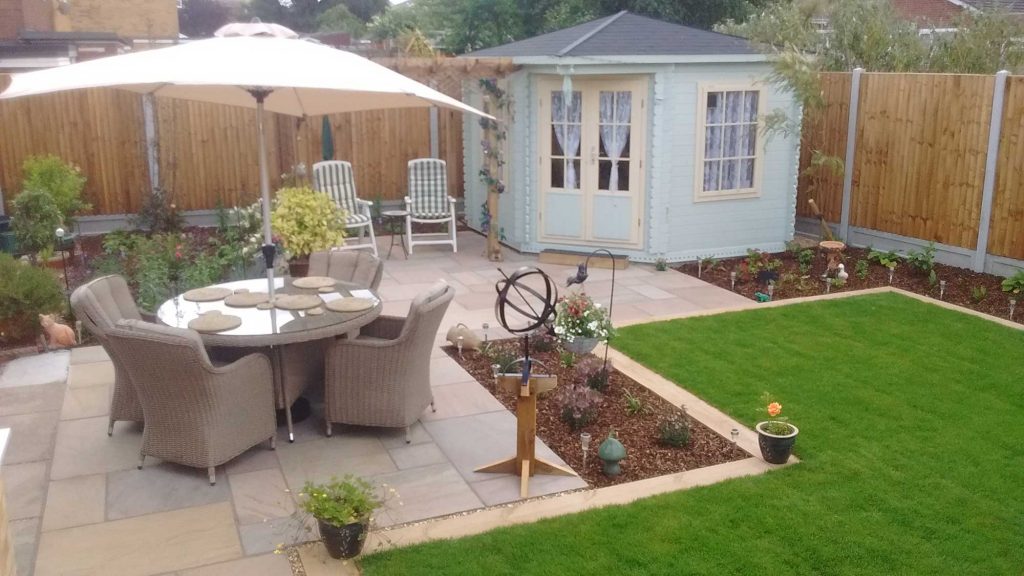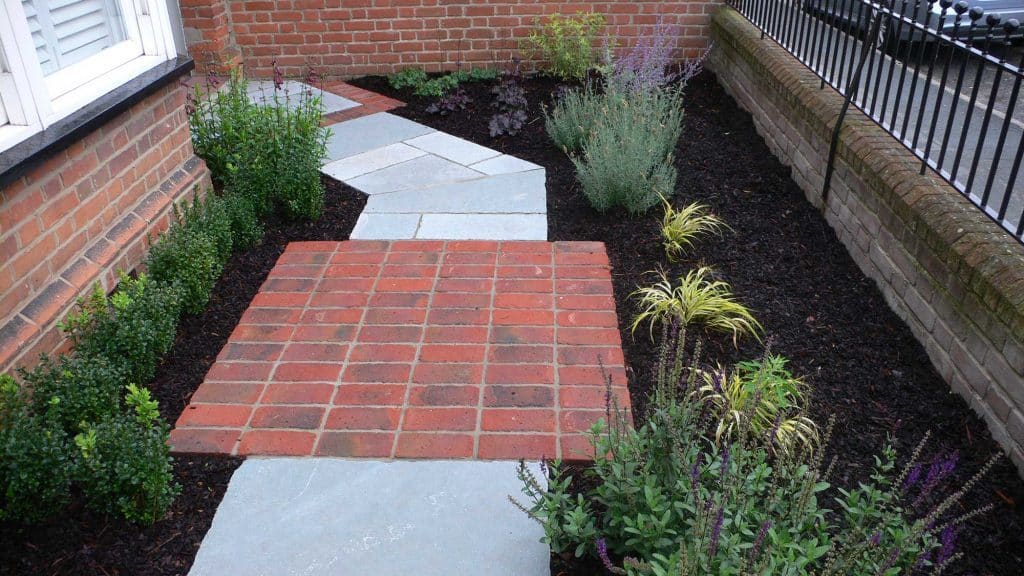01 Feb Designing the perfect retirement garden
Your daily routine changes when you retire and that means that you will probably use your garden differently. In this article we look at designing the perfect retirement garden, one that you will enjoy for the foreseeable future.
The way we use outdoor spaces changes for every different stage of our lives. My first memory of being in the garden is digging holes in Dad’s flower beds with a plastic spade. Then of course there was my footballing stage, my seedgrowing stage, my barbecues with mates phase (still going through that one), my “make the garden of my first home special” stage. At the moment time has gone backwards to the digging holes stage – but that’s my Son Ollie, not me.
A retirement garden can be so many things to so many people.
- Beautiful space to welcome friends and family to your home
- Safe outdoor play area of grandchildren and great grandchildren
- Producer of fresh fruit and veg
- Somewhere to keep you busy that you can take pride in.
- A relaxing place to visit in between holidays and days out
- The place to watch wildlife in real life rather than on the telly
Lots of these features of this space lend themselves to a retirement garden. It’s private, it’s secure, easy to maintain and relaxing but still a great space for entertaining.
The thing about a retirement garden is it needs to adapt to your changing lifestyle. So when I’m designing a retirement garden – and please don’t take offence – I think about futureproofing it so that it will be manageable in 20 or 30 years-time.
Surfaces and paths for a retirement garden
Nobody wants to take a tumble at any stage of their life but the fact of the matter is, that the older you are the longer it takes to heal. So in my retirement gardens I think about non-slip surfaces, broad, sturdy steps and possibly pretty balustrades for occasional help with balance.
I also think about surfaces that are low maintenance. Gravel needs weeding from time to time, lawns need mowing, poor quality decking can be prone to algal growth which must be treated regularly.
Boundaries and screens
I’m hoping that my own retirement will involve lots of days out, weekends away and holidays. If that’s your dream too, you’ll need to be sure that your home is secure while you’re away. A nice prickly hedge, sturdy lockable gates and well maintained fences will all help. Especially if the fence is too high to see over or to climb.
Security is also important if you have pets. Let them have the freedom of the garden without the worry of them wandering off and getting into a muddle.
Moving around the garden
Let’s face it, you’ve worked hard all your life and now you want to relax a bit. You don’t want to be stomping mud into the house with every trip to the shed. Neither do you want any part of your garden to be out of bounds at any time of year – because then it becomes a waste of space.
In any of my garden designs, I’m careful to make paths wide enough for a wheelchair or a mobility scooter and I’ll include spaces to turn round in too. You never know what the future holds.
Of course wide paths also mean that the grandchildren’s prams fit too so you’ll have no excuses to get out of babysitting.
A wide, sturdy path inspires confidence in anyone with challenged mobility. Install a path like this while you’re fit and able and you’ll never regret it.
If slopes are unavoidable I’ll make sure they are still negotiable – perhaps by zig-zagging a path down them, or maybe introducing some wide terraces and steps. That way you won’t find yourself struggling to negotiate the garden if your joints get stiff or you find yourself a bit short of breath.
One thing that could easily be overlooked when designing a retirement garden is light and shade. Lighting for evening use is great but if your eyesight starts to fail in later life, it can help to have contrasting colours to help you navigate. Things like using strong colour to indicate the edges of steps will help you keep your independence for longer.
Bending and stretching
Oh my goodness, don’t talk to me about bending and stretching. I’m nowhere near retirement age but I definitely creak a bit when I bend down to tie my shoelaces. I’m a big advocate of raised beds for growing intensive care plants like veggies or strawberries. Hip height is an ideal depth. You can perch on the edge while you are weeding and seeding. Or you can pop a chair beside the beds. If a raised bed is only around 1 metre wide and is accessible from all sides, most people can reach the middle without having to overextend.
When you no longer feel like growing veg, a raised bed can have permanent planting in it, be topped off to make a table for the barbecue or converted into a water feature. They’re incredibly adaptable.
Longer Term Maintenance
Retirement gardens need to be easier to manage as they mature – not harder.
I know lots of people who developed their interest in gardening after retirement. As a garden designer, I think its great to see clients’ lives enriched by their new garden.
I truly believe that a garden designer and a landscape contractor can lay out a garden but over time, it’s the gardener who actually creates it. Creating a garden needn’t be a huge commitment though. A good garden designer will understand the plants and materials being included and know roughly how much maintenance they will need at each stage of the garden’s lifespan.
Every garden I design, whether we’re talking retirement gardens, family gardens, alfresco eating areas or commercial spaces is based on the client’s preferences for maintenance. So if you like gardening, I’ll make sure there’s plenty to keep you occupied. If, on the other hand you plan to have lots of adventures and need the garden to be almost self-sustaining. I’ll incorporate low maintenance materials and easy-care plants.
If you are thinking about changing your garden when you finish work, why not get in touch for a chat?
Find inspiration in our portfolio
Small, low maintenance back garden with lots of privacy
Sloping garden with easy access
Contact Tapestry Design Studio
Good to know
Gardening grants for the disabled








Sorry, the comment form is closed at this time.